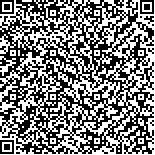胡庆奎,李佳,蔡贤华,等.智能化兔膝关节持续被动活动康复仪的研制及其在兔胫骨平台骨折术后康复中的应用[J].中华物理医学与康复杂志,2019,41(1):8-12
扫码阅读全文

|
| 智能化兔膝关节持续被动活动康复仪的研制及其在兔胫骨平台骨折术后康复中的应用 |
|
| |
| DOI:DOI:10.3760/cma.j.issn.0254-1424.2019.01.002 |
| 中文关键词: 持续被动活动 早期康复 胫骨平台骨折 |
| 英文关键词: Passive motion Tibial plateau fracture Rehabilitation equipment |
| 基金项目:中国科协青年人才托举工程第三届(2017QNRC001);国家自然科学基金青年科学基金项目(81804165);湖北中医药大学针灸治未病科研团队项目(2017ZXZ004) |
|
| 摘要点击次数: 6983 |
| 全文下载次数: 6951 |
| 中文摘要: |
| 目的 自行研制一套智能化兔膝关节持续被动活动(CPM)康复仪,并将其应用于兔胫骨平台骨折术后膝关节的早期康复中。 方法 根据仿生学原理设计,自制智能化兔膝关节CPM康复仪器,主要由核心机械、电控、控制程序三部分组成。选取6月龄雄性新西兰大白兔20只,行胫骨平台骨折术后,按随机数字表法分为CPM组和自由活动组。CPM组采用CPM康复仪器行早期关节活动康复,每日训练1次,每次30 min,共4周。2组大白兔均于造模前和造模成功后第3、7、14、21、28天进行体重监测以及术侧膝关节活动度和肿胀程度测量,并于造模成功28 d后于光镜下观察2组大白兔术侧关节软骨的病理结构。 结果 自制智能化兔膝关节CPM康复仪器运行过程安全可靠,可带动3只兔子同步运动,并可准确、方便地调节膝屈曲角度、运动速度和运动时间,其智能化满足实验要求。造模后第3天,2组大白兔的平均关节活动度与组内造模前比较,差异均有统计学意义(P<0.05);造模成功后第28天,CPM组的平均肿胀程度和平均关节活动度分别为(135.05±1.70)°和(0.175±0.002)cm,与自由活动组同时间点比较,差异均有统计学意义(P<0.05)。造模成功28 d后,CPM组的骨折处畸形程度以及骨折线处的光滑度均优于自由活动组。造模成功28 d后,CPM组缺损区优势组织以透明软骨为主,自由活动组缺损区优势组织以纤维软骨修复为主,且CPM组缺损区域与邻近关节软骨结合情况、软骨细胞新生情况、软骨细胞排列、细胞层次以及软骨下潮线恢复情况等均优于自由活动组。 结论 智能化兔膝关节CPM康复仪器是一种简便可靠、效果较好的胫骨平台骨折术后早期康复器械,其不仅可以促进兔子胫骨平台骨折处塑形和软骨的修复,还可改善膝关节活动度,消除肿胀。 |
| 英文摘要: |
| Objective To design and develop intelligent rehabilitation equipment for administering continuous passive motion (CPM) of a rabbit′s knee joint after tibial plateau fracture. Methods The equipment constructed had three main parts: the core machinery, electronic control and a control program designed based on bionics principles. Twenty six-month-old New Zealand White male rabbits were randomly divided into sedentary (SED) and CPM groups after their knees had been fractured. The rabbits in the CPM group were given 30 min of early joint rehabilitation once a day for 4 weeks using the CPM equipment, while those in the SED group were kept in their cages and allowed free activity without any special exercise program. The body weight, range of motion and swelling of the affected knee joint were measured before the fracture and on the 3rd, 7th, 14th, 21st and 28th days after the fracture. On the 28th day after the fracture the pathological structure of the articular cartilage on the operative side was observed under a light microscope. Results The equipment ran safely and reliably, and drove the rabbits to move synchronously. It could accurately and conveniently adjust the knee flexion angle, movement speed and movement time. The intelligence of the equipment met the experimental requirements. On the 3rd day after the operation the average range of motion in the joints of both groups had changed significantly compared to that before the fracture. On the 28th day after the fracture the average degree of swelling and range of motion in the CPM group were significantly different from those of the SED group. On the 28th day, deformity and the smoothness of the fracture line in the CPM group were superior to those in the SED group. Moreover, the dominant tissues in the defect area of the CPM group were mainly hyaline cartilage while those in the SED group were mainly repair fibrocartilage. The defect area and its adjacent articular cartilages, chondrocyte regeneration and arrangement, layers of cells and subchondral tidal line recovery of the CPM group were better than in the SED group on average. Conclusion The equipment for knee joint manipulation is convenient to use, reliable and effective for the early rehabilitation of tibial plateau fracture, at least in rabbits. It promotes remodeling of the fracture and cartilage repair after tibial plateau fracture, and also improves range of motion in the knee and reduces swelling. |
|
查看全文
查看/发表评论 下载PDF阅读器 |
| 关闭 |
|
|
|